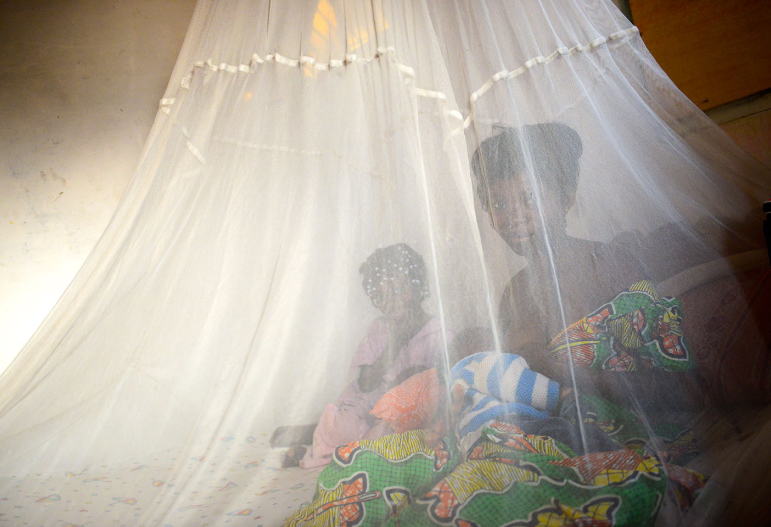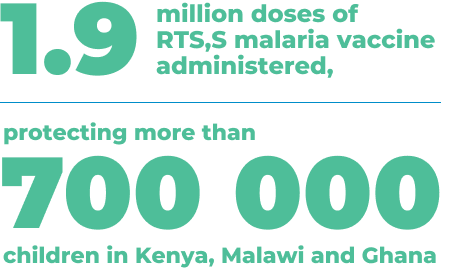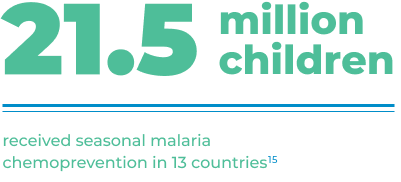Report of the Regional Director 21 - Chapter 2a
Report of the Regional Director 2021 - Chapter 2a
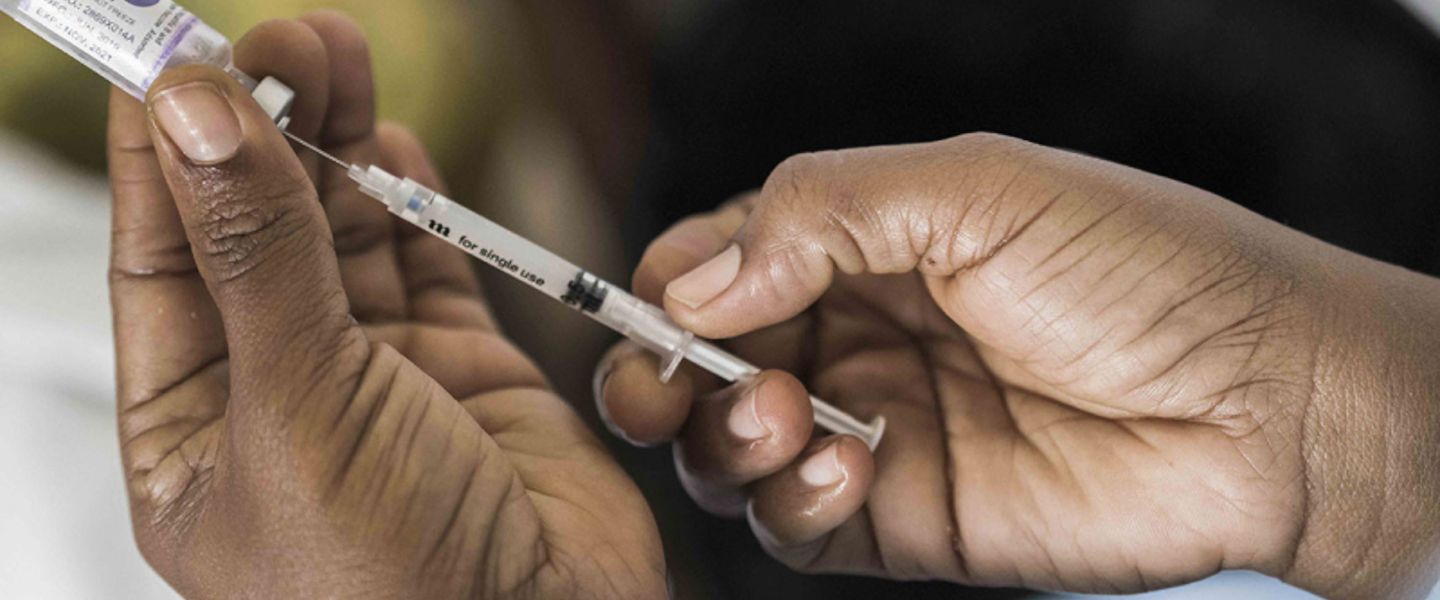
Eradicating, eliminating, preventing
and controlling diseases
Prioritizing vaccine-preventable diseases
WHO, Gavi, the Vaccine Alliance, the Coalition for Epidemic Preparedness Innovations (CEPI) and other partners, are working together to ensure equitable access to vaccines in Africa through the COVAX Facility, and with the African Union through the African Vaccine Acquisition Task Team (AVATT).
In 2020, the African Vaccine Regulatory Forum (AVAREF) endorsed an emergency joint review process and shortened timeline, to accelerate the development of diagnostics, vaccines and medicines in response to the COVID-19 pandemic. The expedited timeline allows 10 days for review of applications of registered products and 15 days for vaccines.
Due to routine immunization disruptions, more than 1.7 million children did not receive the three doses of the diphtheria-tetanus-pertussis (DTP3) vaccine or one dose of measles-containing vaccine (MCV1) in the Region between July 2020 and June 2021. Twenty-nine countries reported a reduction of at least 3% in the number of vaccinated children for either DTP3 or MCV1.
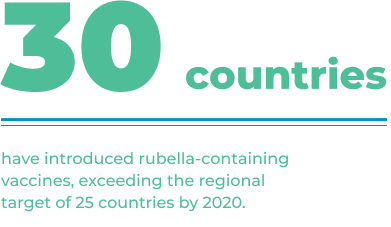
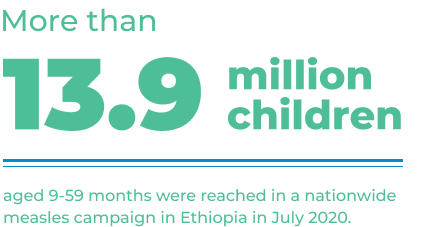
Several countries have maintained high routine immunization coverage and demonstrated readiness for introduction of COVID-19 vaccines by developing focused national deployment and vaccination plans (NDVPs).1 In West Africa, Member States have achieved good immunization coverage and their NDVPs were approved by the Regional Review Committee with minor clarifications.
In Nigeria, the National Primary Healthcare Development Agency (NPHCDA), with support from WHO, has put in place measures to ensure that no eligible person misses routine immunization in the country.
In Nigeria, the National Primary Healthcare Development Agency (NPHCDA), with support from WHO, has put in place measures to ensure that no eligible person misses routine immunization in the country. Data for 2020 will only be available in July 2021, but there is much work to be done to reduce the burden of zero-dose children.
Seven countries2 have established a national immunization technical advisory group (NITAG) in the past year. Thirty-eight countries in the Region now have such an advisory group.3 Following on WHO’s 2017 recommendation for a two-dose measles (MCV2) regimen, 34 countries have integrated MCV2 into their routine immunization schedule in the past 10 months. These include Madagascar and the northern region of Nigeria.
The five remaining countries4 endemic for maternal and neonatal tetanus are making progress towards elimination in the next few years. Eighteen countries are now using tetanus-diphtheria vaccine instead of tetanus toxoid for children aged four years and older, and for women of childbearing age.
Neisseria meningitidis epidemics have dramatically reduced with immunization protecting hundreds of millions of Africans over the past 10 years. However, meningitis outbreaks caused by other bacterial forms of the disease are increasing. The Framework for the implementation of the global strategy to defeat meningitis by 2030 in the WHO African Region, which will be considered by the Seventy-first session of the WHO Regional Committee for Africa, aims to support countries to end bacterial meningitis epidemics by 2030.
Mass vaccination campaigns were conducted in response to yellow fever outbreaks in six countries5 in compliance with personal protective measures against COVID-19,6 during which 6.1 million people were vaccinated. More than 157 million people are now protected against yellow fever in Africa since the inception of the EYE strategy in 2017.
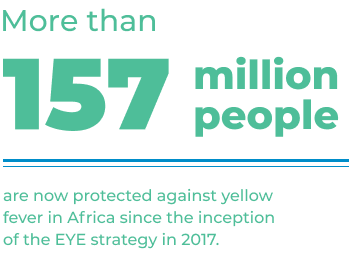
Eight countries7 in the Region are yet to introduce the rotavirus vaccine, and six countries8 have still not introduced the pneumococcal conjugate vaccine (PCV). Despite the global shortage of human papillomavirus (HPV) vaccines, 16 of the targeted 35 Member States have introduced the HPV vaccine. Since July 2020, Mauritania and Cameroon have introduced the human papillomavirus (HPV) vaccine. Benin introduced hepatitis B birth dose in 2020, bringing the number of countries now providing this vaccine to newborns to 14.9 This figure falls 11 countries short of the regional target of at least 25 Member States introducing the vaccine by 2020.
The Effective Vaccine Management Assessment (EVMA) conducted in the Region over the past 10 years showed that the performance of the immunization supply chain system in African countries is low, with only seven countries achieving a minimum performance of 80% at each supply chain level. A tailor-made WHO mLearning programme on immunization supply chain systems in the Region will be launched in July 2021.
Tackling the burden of HIV, TB and hepatitis
Steady scale-up of HIV testing and antiretroviral therapy (ART) continues in the African Region. More than 80% of the 25.7 million people living with HIV know their status and 70% of them are receiving life-saving ART.
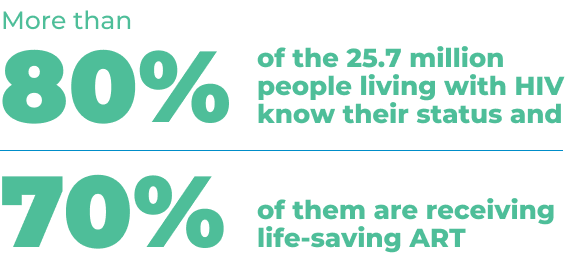
In 2020, a total of 18.2 million people living with HIV were receiving ART and 13 Member States10 had achieved or were very close to achieving their 90-90-90 targets. Consequently, new HIV diagnoses and HIV-related deaths in the African Region have fallen by 35% and 46% respectively over the last 10 years.
The African Region has also made good progress, with a 16% reduction in TB incidence between 2015 and 2019. Five high TB-burden countries11 have reached the 2020 milestone for TB reduction. Kenya, Mozambique, Sierra Leone and the United Republic of Tanzania are all high-burden countries and they have already reached the 2020 milestone of a 35% reduction in TB deaths. However, an estimated 2.5 million people live with TB in the WHO African Region, representing 25% of the global burden. Improving access to screening and diagnosis is a priority as only 1.4 million cases were reported in the Region in 2019.
Momentum is building on action to address viral hepatitis, a long-neglected public health problem responsible for most cases of liver cirrhosis and cancer in the Region. WHO has worked with 27 Member States12 to develop national hepatitis plans. Rwanda and Uganda have established free national public health hepatitis testing and treatment programmes and some other countries13 have commenced subnational or pilot projects.
Action on malaria and neglected tropical diseases
The WHO African Region accounts for 94% of the global malaria burden, with more than 215 million preventable cases and 384 000 deaths in 2020. Seven countries14 achieved the 2020 milestones of reducing malaria incidence and deaths by 40%. However, overall the Region was off track by 37% and 25% for the malaria incidence and deaths milestones respectively.
Even with COVID-19 restrictions in place, indoor residual spraying (IRS) continued in 26 countries16 and insecticide-treated bednet (ITNs) distribution was done in 33 countries.17 Thirty-seven countries used the appropriate confirmatory testing procedures before treatment of malaria, and 32 countries are actively monitoring and managing insecticide resistance. Malaria programme and mid-term reviews were conducted in 17 countries.18
Ethiopia has enhanced surveillance to respond to the spread of the invasive Anopheles Stephensi mosquito species that is associated with urban outbreaks, and seven countries are on alert.19 Support is also being provided to countries on other emerging threats such as vector insecticide resistance, antimalarial drug resistance, and parasite mutations causing false-negative malaria test results.
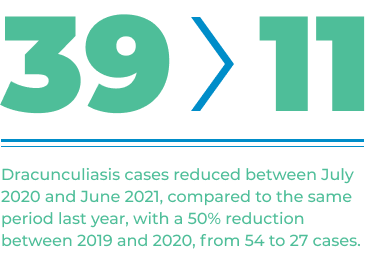
The Expanded Special Project for Elimination of NTDs (ESPEN), focuses on the five NTDs amenable to preventive chemotherapy.22 ESPEN Collect, a survey support services platform launched in 2018 to support collection of high-quality data using mobile phones to support epidemiological surveys, supported 27 surveys in 11 countries23 during the reporting period.
Joint Application Packages (JAPs) for 2021 treatments. A total of 222 million tablets have been delivered since July 2020 to 30 countries for treatment.24
The Gambia became the second country in sub-Saharan Africa to be validated as having eliminated trachoma as a public health problem in 2021, after Ghana in 2018. The implementation of mass drug administration (MDA) for schistosomiasis improved with the collection and analysis of subdistrict level datasets to identify gaps in 12 countries.25
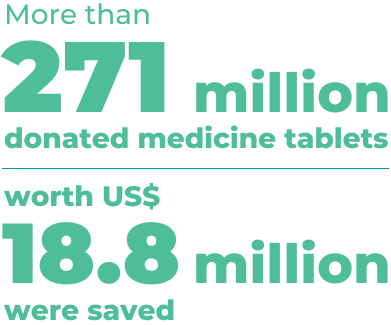
Addressing the rising challenge of noncommunicable diseases
The burden of noncommunicable diseases (NCDs) is increasing in the Region, and this epidemiological transition requires that health systems adapt to integrate NCD prevention and control services.
All countries have strengthened the continuity of NCD services as part of the COVID-19 response using WHO guidance.
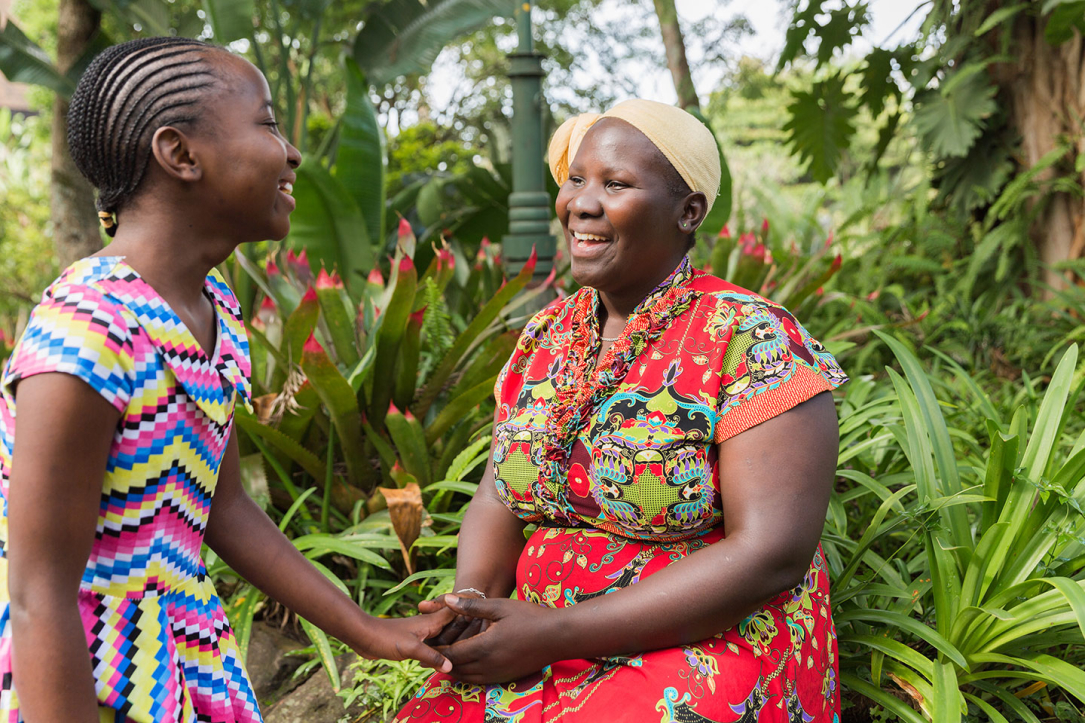
Oral health action plans focusing on noma are being successfully implemented in 10 high-burden countries30 to eliminate noma as a public health problem using WHO’s step-by-step guidance. In Niger, for instance, 27 noma patients benefited from reconstructive surgery, despite service disruptions. This included two patients from Benin and two from Burkina Faso, in line with WHO guidance recommending that neighbouring countries use the Hilfsaktion noma centres in Niger and Guinea-Bissau to care for patients suffering the after-effects of noma.
Thirty-one Member States31 are implementing multisectoral NCD national plans. In Senegal for example, implementation of the plan has included the “Be Healthy, Be Mobile” SMS awareness-raising campaigns. This has led to messages on diabetes care reaching nearly 370 000 patients and their families and health care providers, and provision of health messaging, including around COVID-19, as part of a six-week advice programme during Ramadan.
About 85% of people with mental disorders are unable to access needed care in the African Region. To improve access to mental health services, Kenya is implementing the Quality Rights initiative, which aims to ensure that mental health care is anchored in human rights and is recovery-oriented. Nigeria, Sierra Leone and South Sudan have developed and strengthened legislation and strategic plans, which has led to improvements in service delivery for mental health.
- Cabo Verde, the Gambia, Ghana, Kenya, Malawi, Rwanda, Senegal, Togo, Sao Tome and Principe, Zimbabwe and Zambia.
- Burundi, Seychelles and Sierra Leone, Botswana, Namibia, Comoros and Madagascar
- Algeria, Angola, Benin, Botswana, Burkina Faso, Burundi, Cameroon, Côte d'Ivoire, Comoros, Democratic Republic of the Congo, Eritrea, Eswatini, Ethiopia, the Gambia, Ghana, Guinea, Kenya, Lesotho, Madagascar, Malawi, Mali, Mauritius, Mozambique, Namibia, Niger, Nigeria, Rwanda, Senegal, Seychelles, Sierra Leone, South Africa, South Sudan, United Republic of Tanzania, Togo, Uganda, Zambia and Zimbabwe.
- A functional NITAG has been defined by WHO as one that meets the following six process indicators: (i) legislative or administrative basis for the advisory group; (ii) formal written terms of reference; (iii) at least five different areas of expertise represented among core members; (iv) at least one meeting per year; (v) circulation of the agenda and background documents at least one week prior to meetings; (vi) mandatory disclosure of any conflict of interest. (LIST)
- Ethiopia, Guinea, Nigeria, Senegal, South Sudan and Uganda.
- Using the WHO Framework for decision-making and guidelines for implementation of mass vaccination campaigns in the context of COVID-19
- Comoros, Congo, Côte d’Ivoire, Gabon, Guinea, Niger, Senegal and South Sudan.
- Chad, Comoros, Equatorial Guinea, Gabon, Guinea and South Sudan.
- Algeria, Angola, Benin, Botswana, Cabo Verde, Côte d'lvoire, Equatorial Guinea, the Gambia, Mauritania, Mauritius, Namibia, Nigeria, Sao Tome and Principe and Senegal.
- Botswana, Eswatini, Ethiopia, Kenya, Lesotho, Malawi, Namibia, Rwanda, Uganda, United Republic of Tanzania, Uganda, Zambia and Zimbabwe.
- Ethiopia, Kenya, Namibia, South Africa and United Republic of Tanzania.
- Algeria, Benin, Burkina Faso, Burundi, Cameroon, Comoros, Côte d'Ivoire, Democratic Republic of the Congo, Eritrea, Eswatini, Ethiopia, the Gambia, Ghana, Guinea, Malawi, Mali, Mauritania, Namibia, Niger, Nigeria, Rwanda, Senegal, South Africa, South Sudan, Togo, Uganda and United Republic of Tanzania.
- Benin, Cameroon, Chad, Côte d’Ivoire, Eritrea, Ethiopia, the Gambia, Ghana, Kenya, Mauritania, Mozambique, Nigeria, Senegal, South Africa, South Sudan, United Republic of Tanzania.
- Benin, Burkina Faso, Cameroon, Chad, the Gambia, Ghana, Guinea, Guinea-Bissau, Mali, Nigeria, Niger, Senegal and Togo.
- Burkina Faso, Cameroon, Ethiopia, Nigeria, Mozambique, Senegal and United Republic of Tanzania.
- IRS in Angola, Benin, Botswana, Burkina Faso, Burundi, Cameroon, Cabo Verde, Côte d'Ivoire, Eswatini, Ethiopia, the Gambia, Ghana, Kenya, Madagascar, Malawi, Mali, Mozambique, Namibia, Rwanda, Senegal, Sierra Leone, South Africa, United Republic of Tanzania, Uganda, Zambia, Zimbabwe.
- ITN distribution in Angola, Benin, Botswana, Burkina Faso, Burundi, Cameroon, Chad, Central African Republic, Côte d'Ivoire, Congo, Democratic Republic of the Congo, Ethiopia, the Gambia, Ghana, Guinea, Guinea-Bissau, Kenya, Liberia, Madagascar, Malawi, Mali, Mauritania, Mozambique, Niger, Nigeria, Rwanda, Senegal, Sierra Leone, South Sudan, United Republic of Tanzania, Uganda, Zambia and Zimbabwe.
- Angola, Congo, Eritrea, Eswatini, Ethiopia, the Gambia, Madagascar, Mali, Mozambique, Namibia, Nigeria, Senegal, Sierra Leone, South Sudan, Uganda, Tanzania and Zanzibar.
- Eritrea, Ethiopia, Kenya, Rwanda, South Sudan, Uganda and United Republic of Tanzania.
- The remaining countries are Angola, Chad, Democratic Republic of Congo, Ethiopia, Mali and South Sudan.
- Except Comoros
- Lymphatic filariasis, onchocerciasis, schistosomiasis, soil-transmitted helminthiasis and trachoma.
- Angola, Benin, Burkina Faso, Côte d’Ivoire, Ethiopia, Mozambique, Nigeria, Congo, Sao Tome and Principe, Senegal and Togo
- Angola, Benin, Botswana, Burkina Faso, Burundi, Central African Republic, Chad, Côte d’Ivoire, Democratic Republic of the Congo, Eritrea, Ethiopia, the Gambia, Guinea, Guinea-Bissau, Kenya, Liberia, Malawi, Mali, Mauritania, Mozambique, Niger, Nigeria, Rwanda, Sao Tome and Principe, Senegal, Sierra Leone, South Sudan, United Republic of Tanzania, Uganda and Zimbabwe.
- Chad, Gabon, Ghana, Guinea, Liberia, Malawi, Mali, Rwanda, Senegal, South Sudan, Togo and Uganda.
- Angola, Benin, Burkina Faso, Burundi, Chad, Congo, Democratic Republic of the Congo, Eritrea, Eswatini, Ethiopia, the Gambia, Guinea, Guinea-Bissau, Kenya, Liberia, Madagascar, Malawi, Mali, Mozambique, Niger, Rwanda, Senegal, Sierra Leone, Togo, Uganda, United Republic of Tanzania, Zambia and Zimbabwe.
- Benin, Botswana, Burkina Faso, Cabo Verde, Côte d'Ivoire, Eritrea, Eswatini, Ethiopia, Guinea, Lesotho, Malawi, Mali, Niger, Nigeria, Senegal, Seychelles, Sierra Leone, South Sudan, Togo, Uganda, United Republic of Tanzania, Zambia and Zimbabwe.
- Burkina Faso, Niger, Mali, Senegal, Zimbabwe, Uganda and Tanzania
- Burkina Faso, Eswatini, Guinea, Kenya, Malawi, Nigeria, Rwanda, Senegal, Uganda and Zambia.
- Benin, Burkina Faso, Côte d'Ivoire, Democratic Republic of the Congo, Guinea-Bissau, Mali, Niger, Nigeria, Senegal and Togo.
- Algeria, Benin, Botswana, Burkina Faso, Burundi, Cabo Verde, Chad, Côte d'Ivoire, Democratic Republic of the Congo, Eswatini, Ethiopia, the Gambia, Ghana, Guinea, Kenya, Lesotho, Liberia, Madagascar, Malawi, Mauritania, Namibia, Niger, Nigeria, Senegal, Seychelles, Sierra Leone, South Africa, United Republic of Tanzania, Togo, Uganda and Zambia.



